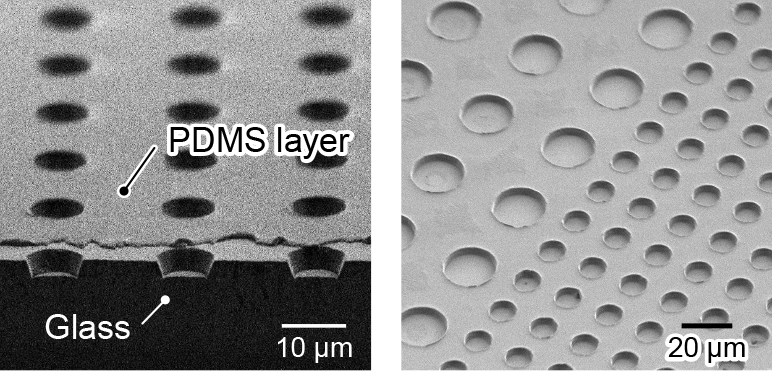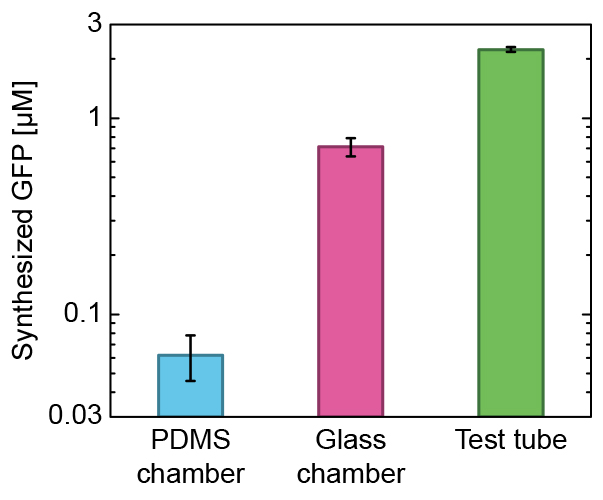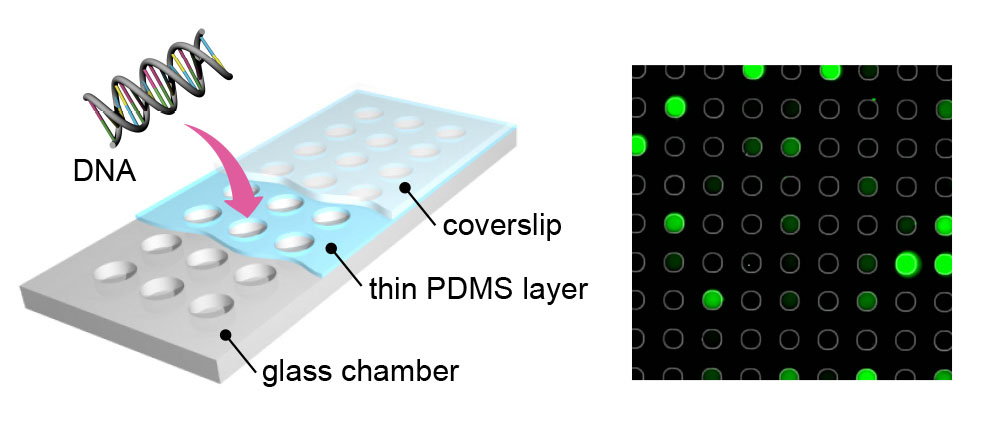Protein synthesis from a single copy of DNA
Biochips
Most biochemical researches are performed at sample volumes ranging from microliter to milliliter. However, recently, it has become possible to perform experiments at very small sample volumes using microfluidic devices. The tiny scale of the reaction volume precisely defined by the photo-lithographic processes has allowed the direct observation of single enzyme kinetics. Moreover, the investigations of complex reactions such as protein synthesis using microfluidic devices have been reported.
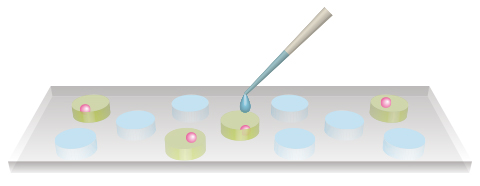
Glass microchamber
Polydimethylsiloxane (PDMS) is the most frequently used material in microfluidics applications, but this material is known to adsorb protein molecules and to absorb molecules with low molecular weight. These properties of PDMS sometimes become the major obstacles in biochemical research applications. Indeed, we found that the protein synthesis using the cell-free system was substantially inhibited when it was performed in microchambers made of PDMS. To overcome the obstacles, we made the microchambers on a glass (quartz) substrate. We spin-coated a thin membrane of PDMS (1.5 μm) on the quartz substrate, and used it as the mask for dry-etching the substrate. Using this method, we fabricated microchambers with the glass inner wall, in which the thin PDMS layer on the substrate surface realized the hermetic sealing. We examined the efficiency of green fluorescent protein (GFP) synthesis in microchambers (Volume = 240 fl) made of glass and PDMS, and observed that the amount of GFP synthesized in the glass chamber was 12-fold more than in the PDMS chamber.
Single-molecule observation
We investigated whether protein synthesis using the cell-free system can be detected from a single copy of DNA. As expected from the single-molecule experiments, each chamber exhibited quite different fluorescence intensities, with the majority of the chambers showing no fluorescence signal and some chambers showing discrete intensity levels. Obtained results were analyzed in detail and strongly suggested that we succeeded in detecting the GFP synthesis from a single copy of DNA in a quantized manner.
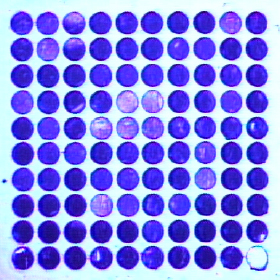
Collective dynamics of chemical oscillators
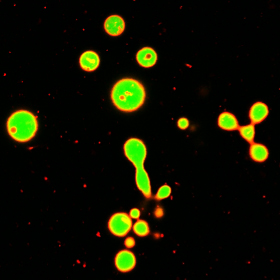
Deformation of giant unilamellar vesicles
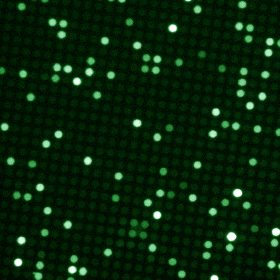
Protein synthesis from a single copy of DNA
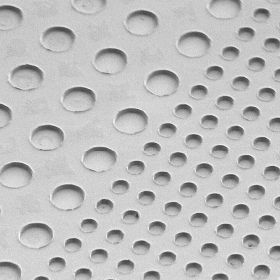
Volume dependence of protein synthesis

Droplet & Microchannel
(Paper in progress)

Impact sensor
(Ring!Ring!Project)
